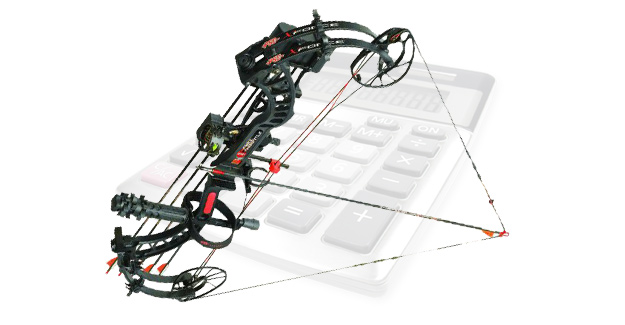by Brian Stephens

Now that turkey season is over, our thoughts are shifting to the fall. We begin to think about adjusting our equipment from chasing long beards to chasing big game. One piece of equipment that we begin to work on now is our bows. I like to get my bow set up for hunting whitetails and other big game early, so when I practice during the summer, I am dialed in for hunting season. Many people often wonder how to estimate a bow’s speed under different setups. By knowing the IBO/ATA specification of a bow, it is possible to get a decent estimation of how fast a bow will shoot with different arrows, draw lengths, or draw weights. Knowing the bow and how it shoots is the key to success.
Understanding Bow Speed
Let’s first talk about where a bow’s speed rating comes from and what it means. Most compound bows use the IBO (International Bowhunting Organization) specification. This specification calls for arrows that weigh 5 grains per pound of draw weight and are generally used with a bow set at 70 lbs draw weight, 30″ draw length, and one nock set on the string. There is some wiggle room in the specifications, however. The draw length is allowed to be +-3/4″ and the draw weight +-2 lbs. This means that the bow can actually be set at 30 3/4″ and 72 lbs with a 350-grain arrow.
Another specification that is gaining popularity is the ATA (Archery Trade Association). ATA is very similar to the IBO, yet much more restrictive. For ATA, the bow can be set to 50, 60 or 70 lbs of draw weight with only +-0.1″ variance and a draw length of 30″, +- 1/4″. Also, only one nock set on the string is allowed, and the arrow must be exactly 5 grains per pound of draw weight. Because it is a more restrictive specification, it gives an overall better view of what speeds a bow can really reach.
Estimating Bow Speeds From Specifications
The majority of bowhunters are not shooting with the 70 lbs, 30″ and 350 grain arrow setup by which most bows are rated. Therefore, it’s useful to know how a bow will perform under different setups. By knowing the IBO or ATA rating of a bow and also knowing what you will have the bow set to and the arrow weight, the actual bow speed can be estimated. This is not an exact science, but with a little math it’s possible to get close. It is easy to be lead to believe that when you pull your bow out of the box, it will be shooting the blazing speeds advertised on TV. Most shooters will not fit the specs referenced on the TV ads. That does not mean your bow will not be fast, though. If you want to know a more accurate speed for your bow you can follow these steps:
Adjustments:
- For every inch of draw length under 30″, subtract 10 fps. Every inch over 30″, add 10 fps.
- For every 3 grains of total arrow weight above 5 grains per pound of draw weight, subtract 1 fps.
- For every 3 grains of weight on the bowstring, subtract 1 fps.
Other rules:
Generally speaking, bow ratings are done at 70 lbs, but are more often shot at 60 lbs. Shooting at 60 lbs results in the bow performing at 3-4 fps slower, assuming that the arrow remains at 5 grains per pound draw weight.
The rule for weight on the string applies to nock sets, d-loops, kisser buttons, peep sights and anything else near the center of the string. An exception can occur when nock sets and speed buttons are placed near the cams. The placement can actually speed up the velocity, but do not count these items when calculating speed changes.
If you would like to calculate your Arrow Speed, Kinetic Energy, or Arrow Weight, go to the following Archery Calculators Page. You just have to input your bow’s specs and the calculator will do all the work.
At the end of the day most bows on the market shoot well and fast. Some bows may be faster according to cam design and brace height. It really boils down to your personal preference and your hunting scenarios. You must know your bow and how it shoots for the game and environment in which you hunt. Knowing your bow will ultimately help you become a better hunter because you will know the bow’s limitations and yours. Good luck this season!






























